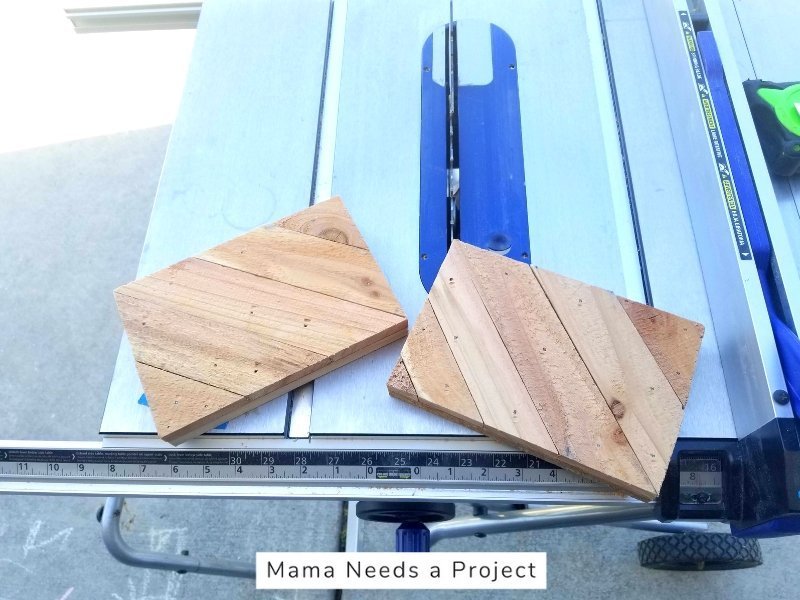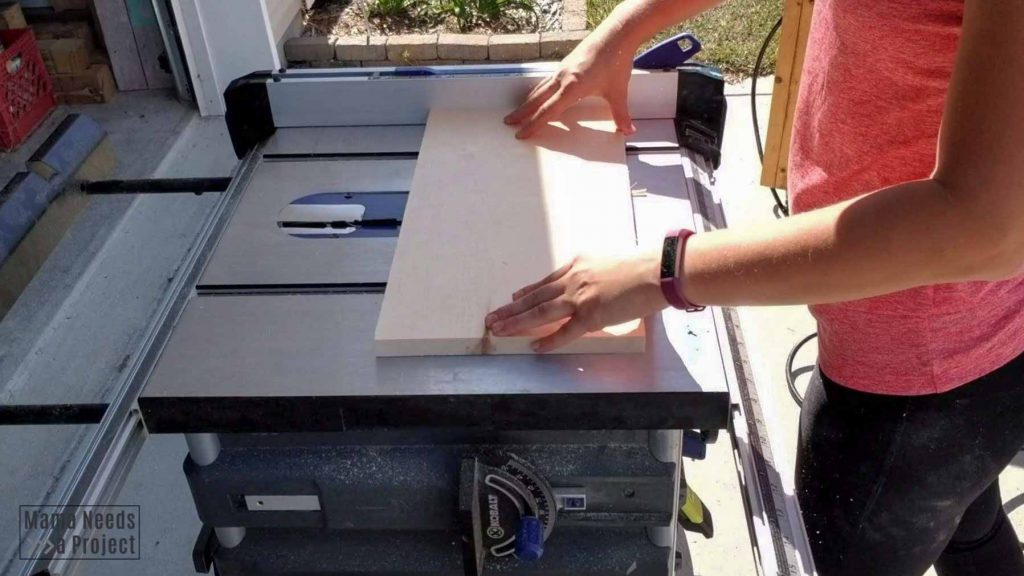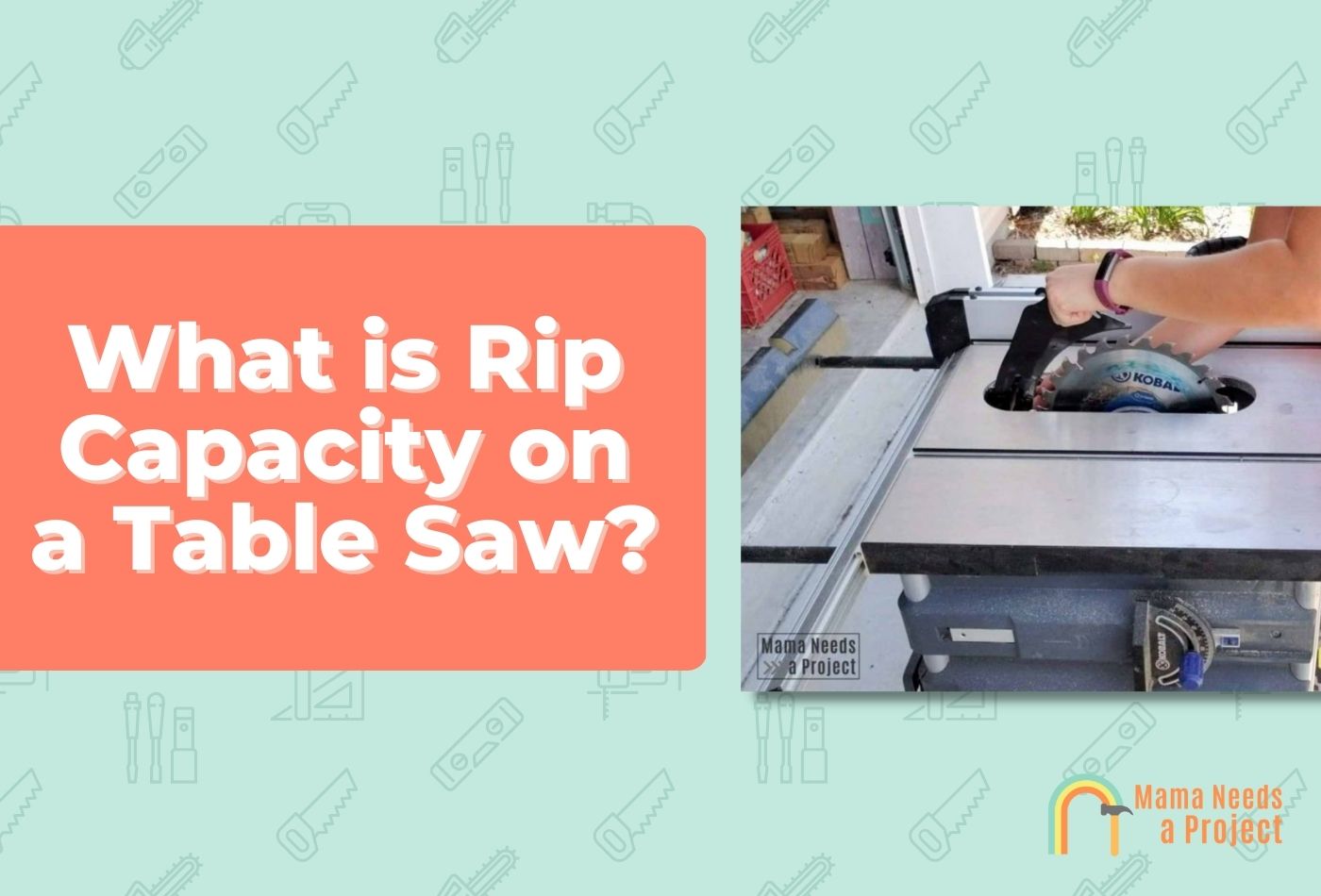What is Rip Capacity on a Table Saw? (What You Should Know!)
If you own a table saw, you’ve probably heard of rip capacity by now. But if you’re a beginner woodworker looking for a table saw, you might be wondering “what is rip capacity on a table saw?”
In this post, I’ll explore everything you should know about rip capacities and why it’s important. Let’s dig in!
- Rip capacity refers to the distance between a table saw’s blade and its fully extended rip fence. A wide ripping capacity allows the saw to cut larger sheets and boards such as plywood or other large pieces.
- A table saw’s ripping capacity can be extended with specially designed table extenders or a homemade tabletop extender if necessary.
What Is Rip Capacity?
The distance between the table saw’s fully extended fence and its blade is referred to as the saw’s rip capacity. In other words, rip capacity is the maximum material width that a table saw can handle.

Table saws are known for their ability to make precise rip cuts, but rip capacity affects the saws ability to make crosscuts, miter cuts, and bevel cuts too.
Virtually all modern table saws have a finite rip capacity, but that doesn’t mean you couldn’t add on your own extension, provided you have the materials, tools, know-how, and space necessary to do so.
That said, the majority of modern table saws are built to accommodate an increase in cutting capacity, and many even come with extenders that are durable, sturdy, and easy to attach.
Common Rip Capacities
There are a variety of table saws these days, and larger table saws have more rip capacity than smaller table saws.
But table saw rip capacity isn’t limited by the table’s size.
After all, a material’s width can exceed the capacity of a table, in which case you’d have a section of the material floating as it passes through the table saw’s blade at the opposite end.
Benchtop table saws, contractor table saws, and cabinet table saws are the three most popular table saw variants, and they all have different rip capacities.
Benchtop Table Saws (28 Inches)
Most benchtop table saws have a rip capacity of 28 inches. Models that come with extenders can have up to 48 inches of rip capacity.
Benchtop table saws are highly portable and great for smaller workshops, but most aren’t built to handle wide, heavy-duty materials regularly.
That said, if you need to cut a wide piece of medium-density fiberboard (MDF), and all you have is a benchtop table saw, don’t let the saw’s size discourage you, especially if it came with extenders.
In the worst case, a small section of the material hangs off the end, but this won’t really matter so long as the material is thick, dense, and run smoothly through the blade.
Note: These are the best table saws for small-time woodworkers who undertake a handful of woodworking projects each year.
Contractor Table Saws (30 Inches)

This table saw’s rip capacity is larger, but not by much. However, you can extend the rip capacity on these saws too.
The maximum rip capacity on most contractor saws is 30 inches, and usually extenders will add 10-20 inches.
Contractor table saws have greater rip capacity in large part because they’re designed for professional contractors.
Cabinet Table Saws (50 Inches)
Cabinet table saws, otherwise known as cabinet saws, have the most rip capacity, in large part because these saws are designed for frequent cutting of heavy-duty materials.
Along with having the most rip capacity, they’re also the largest table saw variant. Therefore, if your workshop doesn’t have a lot of floor space, think twice before getting a cabinet table saw.
Also, if you’re not doing commercial woodworking, metalworking, etc., then there’s really no need to have something as large and powerful as a cabinet table saw.
What Size Rip Capacity Do I Need?
To determine what size rip capacity you need, ask yourself the following questions; your answers will point you towards an ideal rip capacity.
How often do you cut wide materials?
If you don’t cut wide sheets and boards regularly, then you won’t need a table saw with a higher rip capacity. In fact, having a lot of rip capacity can actually be a hinderance when you’re working with small pieces of wood or another material.
That said, there may be times when you do need to cut wider materials, and when these times come it’s best to have extenders ready to go; this way you can increase rip capacity when you need to and shorten it right after.
Do you have space for a table extension?
The space around your table saw should be considered as well. If you don’t have a lot of space, it doesn’t make sense to get a saw with a lot of rip capacity; in this case the saw would be bulky more than anything else.
Does price matter?
Price should also be considered when you’re determining the rip capacity you want from a table saw.
Generally speaking, table saws with more rip capacity are more expensive. That said, there are plenty of mid-priced table saws with decent rip capacity, and if you find that the capacity on such a saw isn’t enough, simply add an extension.
Rip Capacity vs. Table Saw Cutting Depth
Sometimes rip capacity and cutting depth are referenced together as if they’re the same thing, but this isn’t the case.
Whereas rip capacity refers to the distance between the table saw’s rip fence and its blade, cutting depth refers to the maximum depth a table saw can reach when cutting through material.
In other words, if a table saw has a cutting depth of 2 inches, it can make cuts that are 2 inches deep (or thick) in a material.
Cutting depth is largely determined by the size of the saw blade. Most table saws use 10- or 12-inch saw blades, and 12-inch blades can cut deeper.
Material density is also relevant when considering a table saw’s cutting depth. Specifically, it’s harder to make deeper cuts in dense materials, like hardwoods and certain metals.
Can You Increase Rip Capacity on a Table Saw?
Yes, any table saw’s rip capacity can be increased—in theory. There are, however, times when rip capacity can’t be increased, like when there’s not enough free space around the saw to allow for this.
But most of the time, a table saw can be extended in one of the following ways:
Extend the Table
Most modern table saws come with tabletop extenders, and those that don’t can usually accommodate manufactured extenders.
Manufactured extenders are preferred over homemade table extenders for a few different reasons.
For one, they usually lock into place, making them sturdier and safer.
Also, since they’re made of the materials that modern table saws are made of, you don’t have to worry about the combined surface being multi leveled.
But these extenders cost more than homemade versions, and you may have a hard time attaching an extender, especially if it wasn’t made specifically for your table saw.
Most manufactured extenders add 10-20 inches to a tabletop.
Readjust the Fence
Most modern table saws have an adjustable rip fence. In fact, saws that don’t have an adjustable rip fence are pretty rare nowadays.
To increase rip capacity on a saw that has an adjustable rip fence, simply extend the fence accordingly.
If you extend the rip fence as far as it can go and there’s still material hanging over the opposite end of the table, this may not be the end of the world, especially if the material is sturdier.
Also, if your rip fence extends outward but there isn’t much table underneath it when it does, such can lead to imprecise cutting.
In this instance, you should extend the fence to the end of the table and then add a tabletop extender at the opposite end.
Here’s a video to learn more about extending the rip capacity for your saw.
Check out my favorite table saw fence systems for increased accuracy when cutting!
Purchase an Extendable Table Saw
Constructing a table saw extension on your own isn’t that difficult. You just need to make sure the extension is level with the tabletop, and it also needs to be sturdy.
While some create extensions out of wood slabs that can be attached to the end of table saws, others use a wood block or a wood table with legs to add more rip capacity.
The table extension must be smooth, otherwise materials may have a hard time passing through the saw blade. And if a material is cut in a stop-and-go fashion, the finished product could be a jagged edge.
You can also purchase an extension to help extend the rip capacity of your saw.
- Adjusts from 26″ To 45″ (660mm to 1150mm)
- Extra strong with a 300 lb. (136 kg) capacity
- 2 “(50mm) with 11.25” (286mm) long Polished steel roller
Which Table Saw Makes the Best Rip Cuts?
Just because a saw has a larger rip capacity doesn’t mean it’ll deliver precise rip cuts consistently. No, the quality of rip cuts, and other cuts for that matter, is largely determined by the saw’s power and the components it utilizes.
DeWalt table saws, for example, are known for being able to deliver precise cuts in a range of materials. Bosch, Craftsman, and Milwaukee table saws have similar reputations.
Which Section Offers More Rip Capacity: Right or Left?
Most table saws have rip capacity on either side of the blade, but the vast majority of table saws have substantially more rip capacity to the right of the blade.
I’m not sure why this is, but I imagine lefties have an easier time using table saws with rip capacity that’s left of the blade. This way the leading left hand is as far from the blade as possible when material is being fed through it.
Portable Table Saws vs Stationary Table Saws: Rip Capacity
Portable Table Saws
Portable table saws are smaller and therefore have less rip capacity. That said, these table saws can be equipped with extenders to increase rip capacity.
If you intend to use your table saw regularly but you don’t see yourself needing a large rip capacity often, consider getting a portable table saw with extenders; this way you can easily get extra rip capacity without buying a larger saw.
Stationary Table Saws
Stationary table saws are larger and therefore have more rip capacity.
Also, stationary models tend to be versatile table saws, since they can perform more cuts in more materials. And even these larger saws can be equipped with a table extension.
Larger table saws can also hold larger blades that make deeper cuts.
Stationary table saws are also much more powerful than most portable table saws.
Looking to make miter cuts on your table saw? Check out these great table saw miter gauges!
Final Thoughts
In the end, a table saw’s rip capacity is one of its most important qualities, and generally larger table saws have larger rip capacity while smaller saws have smaller rip capacity.
To extend rip capacity, add a table extender, either one that was manufactured specifically for this purpose or something you made yourself.
Lastly, how much rip capacity a saw possesses has no bearing on its cutting depth, cutting speed, or cutting power.


